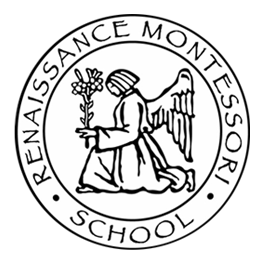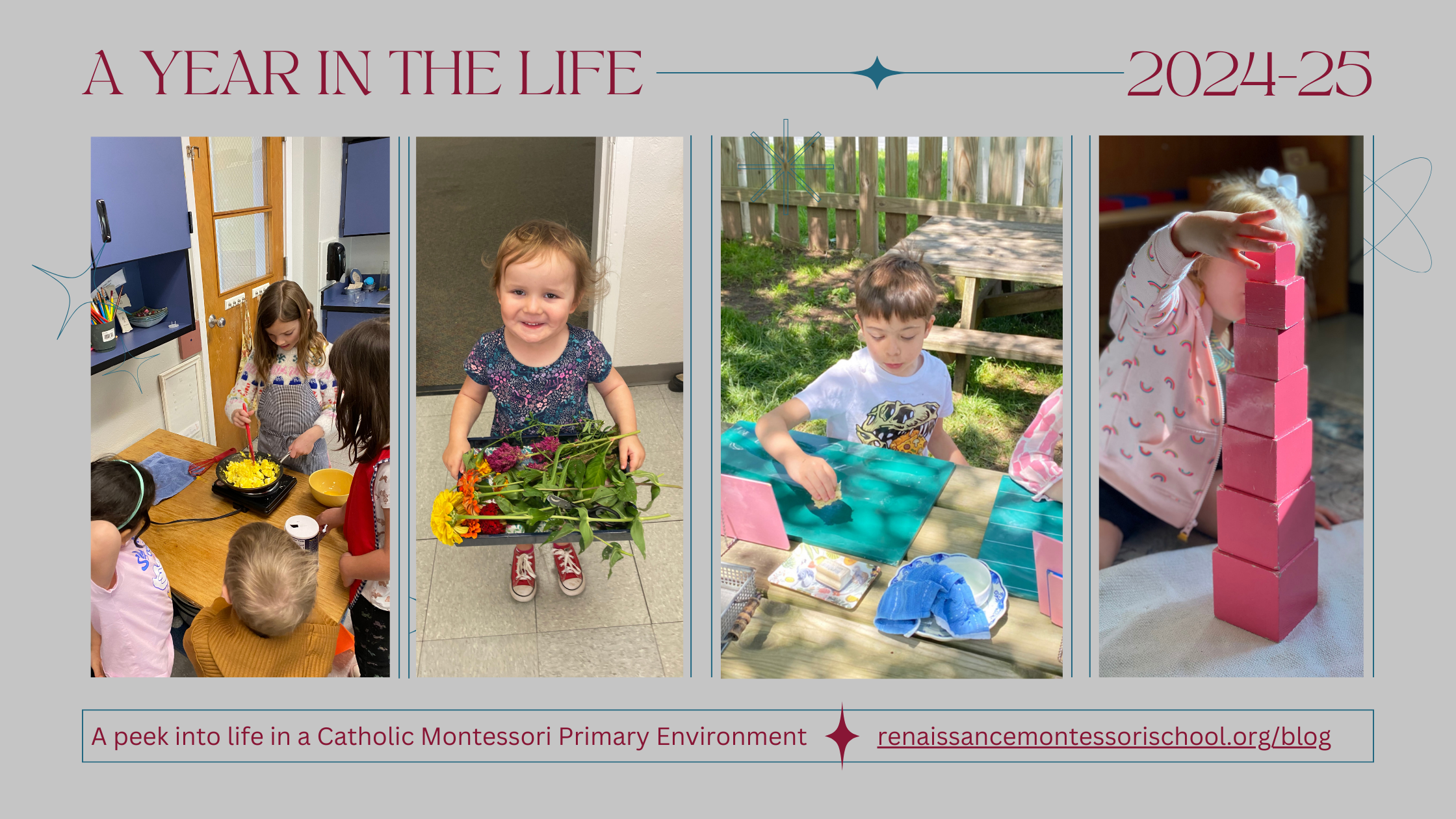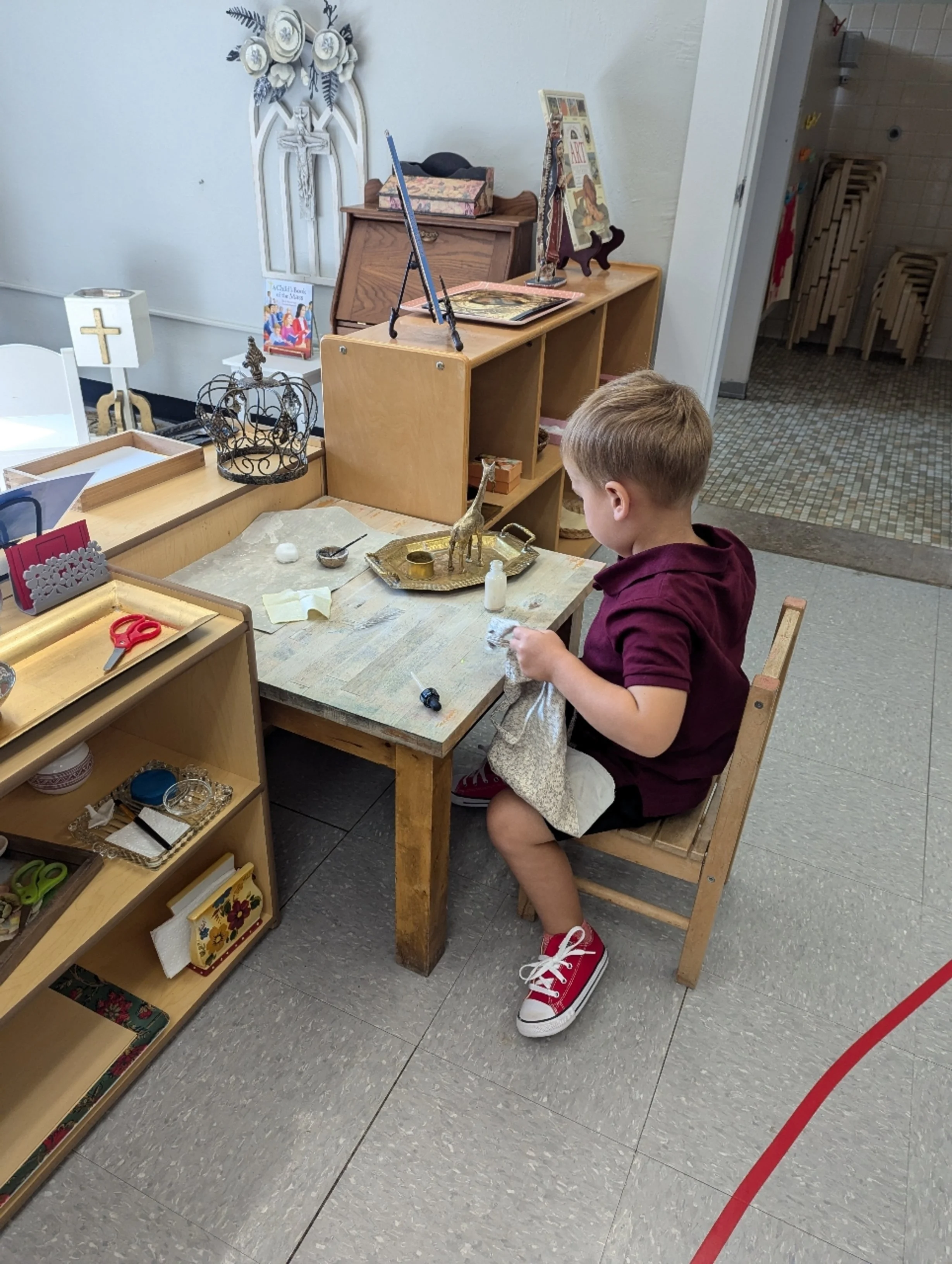In the beginning of the year, special attention is given to the rhythm, order and details of our life together in community, as we work and pray. The Children's House is a second home for both the children and myself, with an indirect aim of greater participation in family life at home and in their church.
The rhythm of children is very different than adults, and so our method of education and catechesis with children is also very different. Pope John Paul II said that the method is as important as the message of Jesus. So we recall what we know about young children and have carefully considered how we explore the question of who is God? Who are you, Lord?
The exercises of Practical Life are an essential part of our Children's House, as an aid to prayer. These exercises are enticing for young children in their quest for independence, self mastery and self control, and in their delight to use real materials or tools to do real and important activities. Some of the favorite activities are polishing objects, hand washing, plant care, cloth washing. These exercises lead children into prayer through their contemplative, repetitive movements and their concentration in the activity before them. When we open the classroom for observation, if you have an opportunity to see a child carefully applying polish to an object and then buffing the object until it is shiny, you will know exactly what I mean. The Practical Life exercises are a kind of liturgy, with an order and a process to be followed. Liturgy is the work of the people and in this ‘House’ it is the work of the little people.
The atrium is a space that has been carefully prepared for the children to absorb catechesis. It has been described by Sofia Cavaletti as the meeting place of God and the child. The adult is merely an indirect aid in each child's discovery of prayer and their relationship with Jesus, because it is the Holy Spirit, who is the master teacher inside of each one of them. Of course the children need an adult to proclaim the Scriptures and to model prayer, relationship, grace and courtesy, and virtue. The children need to see presentations, often a one-on-one opportunity to show a material or proclaim a Scripture, or share a story. We call it a presentation, because it is a little "present" that is offered, and the way that each child responds to this present, (this gift) is their prayer.
Each day, after a morning of “responding to their gifts" in the classroom, we gather at the prayer table to give thanks to God, who is the ultimate giver of all gifts. Prayer is the aim of the atrium and everything that we do in this space; helping children enter into the discovery of God in their souls and nurturing that relationship. The prayer of young children most often sounds like silence, thanksgiving or "I love..." Often the prayers that I hear at the prayer table are, "Thank you God for my mom and dad... For my baby sister... For my friends... For flowers... For birthdays... For Grandma and Grandpa...for rocks...". (I even heard last week, "for rain, that makes mud..." ) Children also often offer prayer of praise, "I love you Jesus... I love the Good Shepherd... I love my mom and dad… I love my house…”
We celebrated the Feast of the Guardian Angels this week, and I brought a group of older children over to the Oratory in our gym. As you know, we have a small model altar and a model tabernacle in our atrium, but we went to the chapel and oriented the children to the chapel by naming things we knew and some new things that maybe we didn’t know, like the Altar Rail and the Tabernacle. We offered our prayers of thanksgiving, praise, and silence just as the angels do. I showed a gesture of prayer called Genuflection, where we make our body small before the large Altar and Tabernacle. This is a gesture that the angels make and I shared a little of what I know about guardian angels: from the moment that each of us began to grow in our mothers belly, our guardian angel has been with us and will always be with us. Our guardian angel can guide us in all that we do. We can talk to our guardian angel and ask for help in our choices that we make at school, even which material to choose. Our angel protects us and keeps us safe, and guides us in our friendships. But the most important job of our guardian angel is to present us to God. We were all feeling very grateful for our guardian angel.
The life of the atrium and our classroom offers orientation to the outside world around us and our life of work and play united with prayer. For young children, this trinitarian aspect of life is all one and the same. Work is their play, play is their work and all of it is permeated by the transcendent which is ever present in young children.





